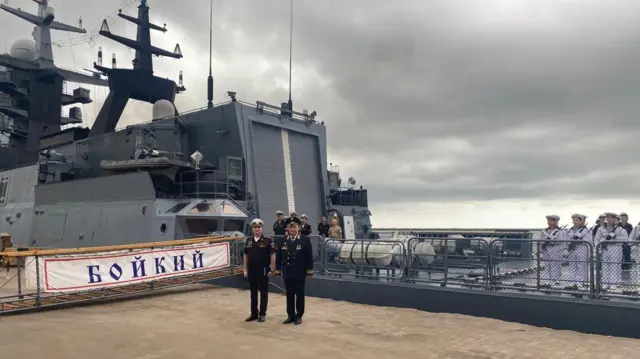Introduction: Covert Passage Raises Red Flags
The Russian warship Boikiy, a guided missile corvette, has drawn international attention after allegedly disguising its identity while escorting two sanctioned oil tankers through the English Channel. According to a BBC Verify investigation, the Boikiy broadcast a fake Automatic Identification System (AIS) signal, masking its true identity in an unprecedented act of maritime deception.
The Journey: Disguise in the Channel
On June 20, satellite images and tracking data confirmed the presence of the Boikiy navigating the Channel alongside two oil tankers – the Sierra and Naxos. These vessels are part of Russia’s notorious “shadow fleet”, often linked with transporting sanctioned oil products under hidden ownership structures. The Boikiy’s maneuver included transmitting a generic AIS code, misleading trackers into identifying it as a civilian vessel previously associated with the same ID number.
The Shadow Fleet: Sanctioned and Shielded
The Sierra and Naxos tankers had sailed from India, through the Suez Canal and the Mediterranean, before coordinating with the Boikiy at the mouth of the Channel. This operation suggests a deliberate attempt to shield these vessels from interception, especially as Western efforts to curtail the shadow fleet intensify.
According to Dmitry Gorenburg of the Center for Naval Analyses, the military escort signals an intention to deter NATO states from boarding or seizing these vessels, warning of potential confrontation.
Unusual Naval Behavior: The AIS Mystery
Frederik Van Lokeren, a former Belgian navy lieutenant, described Boikiy’s actions as “very, very uncommon.” Typically, Russian warships either emit no AIS signal or broadcast as themselves. Faking identification through a spoofed AIS is a rare and provocative move. Images from a webcam in Denmark later confirmed Boikiy’s identity as it passed under the Great Belt Bridge.
NATO Reaction: A Watchful Escort
The UK Ministry of Defence confirmed that the Royal Navy monitored Boikiy’s passage through the Channel. Although unverified, satellite images suggest a British vessel shadowed the Russian corvette throughout the transit. This aligns with standard NATO protocols, especially when dealing with high-risk Russian military movements.
Strategic Implications
This maritime maneuver illustrates growing tensions between Russia and Western powers over sanctioned oil trade. The use of military assets like the Boikiy to accompany sanctioned shipments may mark a new phase in Moscow’s economic and military strategy. The route—from West Africa to the Baltic via strategic European waters—demonstrates a high-stakes chess game playing out at sea.
Conclusion: Navigating Uncharted Waters
The Boikiy’s covert operation underscores a broader geopolitical struggle involving sanctions, energy exports, and military signaling. As Russia tests the boundaries of international law and maritime protocol, NATO nations face a delicate balance: monitor and deter without sparking direct conflict.
For ongoing updates on Russia’s shadow fleet and NATO responses, follow our coverage at The Morning News Informer – World News.


